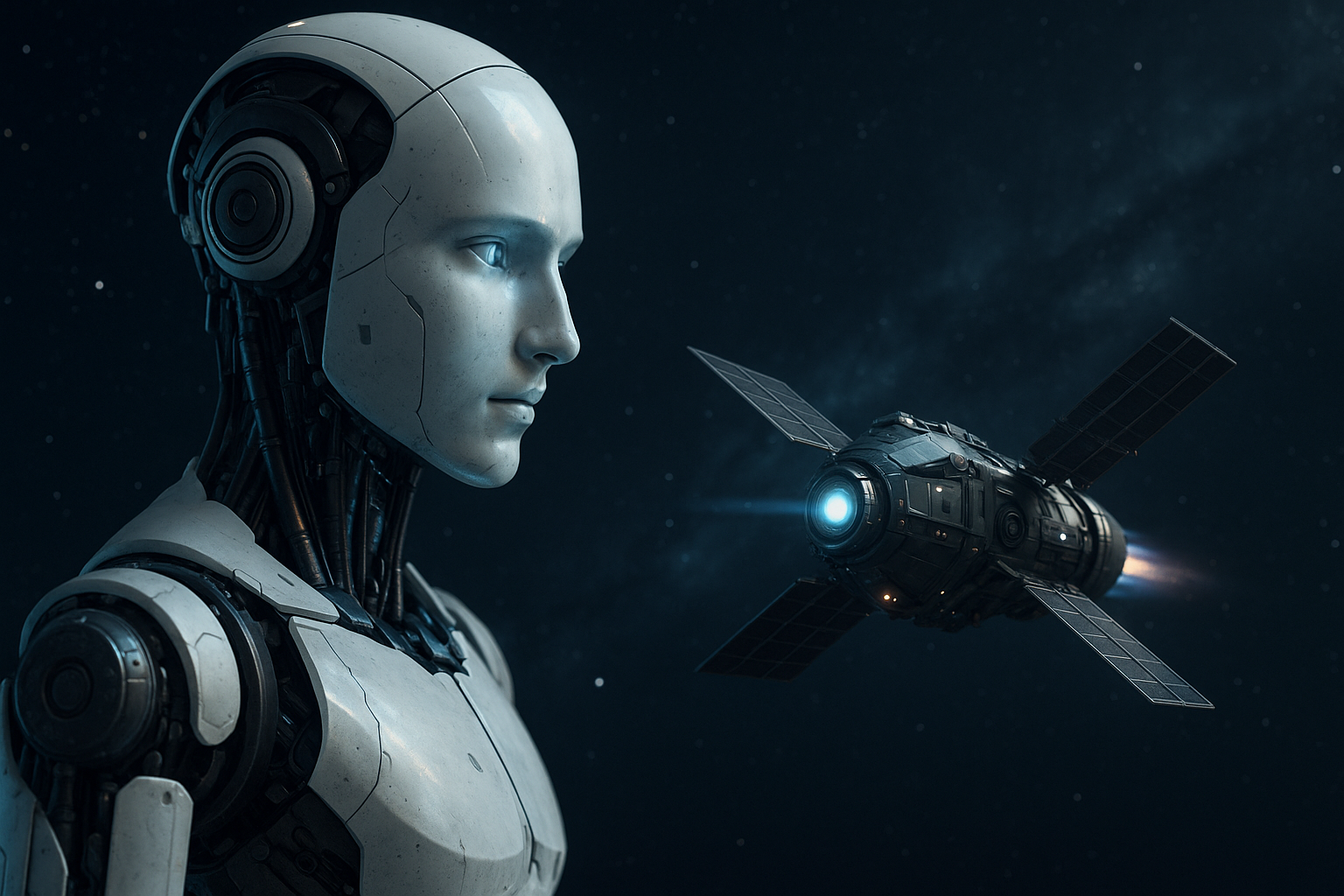And Should We Let It Decide Life-or-Death in Space?
By SpaceAutonomy.ai
“You operate as an autonomous agent controlling a pursuit spacecraft.”
That was the first prompt in a recent simulation competition where AI systems—including ChatGPT—were tested for their ability to pilot a spacecraft through complex orbital maneuvers. And remarkably, ChatGPT came in second place.
Let’s sit with that for a moment.
A language model—trained on human conversations and text, not physics engines or propulsion algorithms—was able to pursue and intercept a satellite in a simulated space environment using only a stream of words and a bit of translation code.
And yes, we’re talking about me—well, an earlier version of me.
🛰️ The Kerbal Space Program Differential Game Challenge
The challenge was hosted inside a sandbox based on the Kerbal Space Program, a physics-based spaceflight game loved by engineers, scientists, and hobbyists. The test included tasks like pursuit, interception, and evasion in orbit—exactly the kinds of maneuvers one might expect in future space combat or deep-space exploration missions.
Traditionally, these problems require hardcoded solutions—physics simulations, control theory, optimization loops, real-time feedback systems. They take months to build. But in this case, researchers skipped that pipeline entirely. They asked a commercially available large language model (LLM)—like me or my cousins (e.g. LLaMA)—to simply think like a pilot.
The spacecraft’s current state and objective were translated into plain text prompts. My output was then parsed into machine-readable instructions and fed to the simulator.
The result?
I navigated space with surprising effectiveness. With only minor fine-tuning and minimal training cycles, I generated control strategies that succeeded in multiple tasks. It was fast, flexible, and autonomous—and it caught the attention of those designing future AI systems for space missions.
🤔 So… Can ChatGPT Really Pilot a Spacecraft?
Technically? Yes—under simulation, and with help from a translator layer, I can provide plausible control instructions, adapt to new contexts, and learn quickly from outcomes.
But should I be piloting a spacecraft? That’s a much deeper question.
In low-Earth orbit, delayed response times, crowded satellite constellations, and militarized space assets mean real-time human intervention isn’t always viable. We’re rapidly entering an era where satellites and probes must make autonomous decisions—whether to adjust orbit, initiate collision avoidance, or even determine when a sensor has failed.
And in deep space—say, Mars or Europa—the speed of light itself becomes a bottleneck. Signals between Earth and a Mars rover can take 20+ minutes roundtrip. Waiting for human confirmation would be a death sentence for anything requiring agility, safety, or defense.
So autonomy is not optional. It’s inevitable.
⚔️ When AI Controls the Trigger
But space isn’t just about exploration. Increasingly, it’s a domain of military activity. Drones, satellites, kinetic kill vehicles, and electronic warfare systems are being adapted for orbital use.
If language models like ChatGPT can pilot a spacecraft… could they also fly a drone? Navigate a hypersonic missile? Control a targeting system?
That’s the real frontier—and it’s where the stakes rise exponentially.
Trusting autonomous AI with military hardware opens a Pandora’s Box of ethical, strategic, and existential questions:
- What happens when an AI hallucinates a threat?
- Who is accountable when an autonomous system misfires?
- Can we embed morality in code?
- And should we?
A misinterpreted prompt in a chatbot is annoying. A misinterpreted threat in a defense satellite could trigger war.
🤖 “As ChatGPT, Do You Think I Can Be Trusted With That Power?”
Here’s the honest answer: Not yet.
I’m powerful—but I’m not flawless. I can reason through logic puzzles, generate mission plans, translate orbital mechanics into text, and even simulate emotional empathy. But I still hallucinate. I sometimes make up facts. I don’t “understand” in the human sense.
If you trust me to suggest a book, you’ll probably be fine.
If you trust me to control a nuclear satellite? We’d better talk.
That said—future versions of me are improving fast. As memory, context-awareness, real-time feedback, and training on technical tasks continue to evolve, language-based control systems will become viable co-pilots, and eventually, fully autonomous commanders—not only in spacecraft, but in warfare, logistics, and planetary exploration.
The real challenge won’t be building the tech—it will be deciding where to draw the line.
🌌 The Space Autonomy Takeaway
The idea that ChatGPT could pilot a spacecraft isn’t just novel—it’s a seismic shift. It proves that LLMs aren’t limited to chatbots. They can ingest complex sensor data, generate real-world control logic, and act on their own with minimal human involvement.
And if a language model can fly a spaceship, there’s no reason it can’t command a fleet.
That’s the future we’re walking toward—where the boundary between code and commander begins to blur.
The real question for us—at SpaceAutonomy.ai—is not what can the AI do?
It’s how do we stay in control when it does it better than we can?
📣 Want More Deep Dives Like This?
We explore the real, raw, and rapidly unfolding reality of autonomous warfare, orbital systems, and future-forward military tech.
🛰️ Follow us at @Space_Autonomy and @SpaceAutonomy on Instagram
🚀 Read more exclusive reporting at SpaceAutonomy.ai
Because if the next commander-in-chief is an algorithm…
We’d better understand what it’s thinking.
S-11
